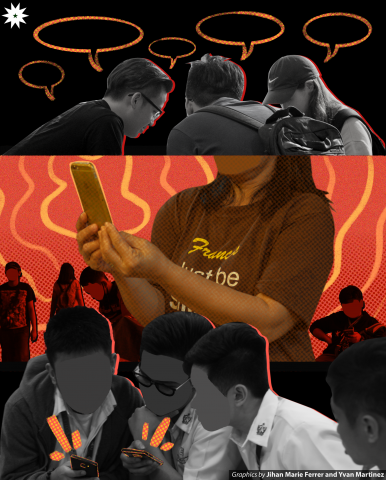A lot can happen in two minutes. The first thing Clement Corominas noticed when he arrived at the campus of University of the Philippines (UP) Cebu was the number of police officers surrounding the school. It was June 5, and a rally was being held in protest of the yet-to-be-signed Anti-Terrorism Bill. Stepping out of the taxi, he witnessed protesters being dragged away in handcuffs. He pulled out his phone and started recording everything. The next thing he knew, he was being arrested too. By the end of the day, Corominas would be in a jail cell along with seven protesters.
“I had no idea why I started recording, maybe [aside from] a gut feeling that I should—like it was some sort of duty,” Corominas explains, as if the sheer magnitude of the violence happening before him had demanded that it be remembered. Within minutes, his videos would spread online like wildfire—bringing attention to the event on a massive scale.
See no evil
The screams of a protester being manhandled by an arresting officer and the ominous sounds of the police squad in full battle garb and formation—Corominas still remembers the police officer he approached, who, instead of answering his questions, arrested him.
“Alam mo ba kung sino ako? Ayus-ayusin mo ‘yung tono mo ah!” bellowed his arresting officer as he was being led to the police vehicle. “Nganong nag apilapil man ka ha?” roared a plainclothes cop.
(Do you know who you’re talking to? I don’t like the tone of your voice!)
(Why are you joining [these rallies]?)
The police who arrested the Cebu 8 later vehemently denied that they breached the Soto-Enrile Accord—a 1982 agreement between UP and the Department of National Defense barring police and military presence within its campuses. However, Corominas contends, “I’d say they ought to check Twitter and count how many videos are out there showing evidence that their officers, who aren’t even in uniform, have infiltrated the campus and made arrests in it. I think those videos speak for themselves.”
Locked up
Behind bars, the Cebu 8 spent their time eating, laughing, and trying to present a strong front, Corominas recounts. Aside from sleeping on the cold prison floor, Corominas’ two-day detention was otherwise reasonable: they were given more than enough food, and medicine was delivered by the guards for the older prisoners.
Just a few weeks after the UP Cebu incident, 20 protesters were also arrested during a Pride mobilization. Last July 4, 11 protesters who held an indignation rally against the newly-signed Anti-Terrorism Act (ATA) in Cabuyao were detained. The recently-held State of the Nation Address was punctuated by 141 arrests as protests sparked across the country.
“Would I go back there and want to be imprisoned again? Hell no,” Corominas expresses. “[But] would I trade four days of freedom to bring awareness to society about the dangerous precedent this new ATA has set? I’d do it again.”
For everybody
Through social media, regular citizens like Corominas can become journalists in their own right. By amplifying the voices of the public, the platform carries information and experiences from different communities to the widest possible audience. The inclusion of citizen journalists in mainstream media reportage opens more opportunities for the public to report news and share their own stories out of their own volition.

Raphael Bosano, an ABS-CBN News correspondent, recognizes the distinguished role citizen journalists have in filling information gaps left by mainstream media networks. With news outlets unable to have reporters in all places at once, citizen journalists “serve as [their] eyes in areas where [they] cannot see,” he says of the symbiotic relationship between professional journalists and citizen reporters. As Bosano puts it, “Ang daming nangyayari sa iba’t ibang parte ng Pilipinas, a journalist cannot be in all of those places at once.”
(There are so many events happening around the Philippines, a journalist cannot be in all of those places at once.)
In the changing landscape of news production, the flow of information has now evolved into a mutual exchange between journalists and their audience. The participatory and inclusive nature of this kind of journalism is one where the audience is now empowered to inform themselves and others. Rather than endanger the integrity of news reportage, citizen journalists like Corominas are necessary allies for the dissemination of news—reshaping the boundaries of journalism through a kind of storytelling that is told from on-the-ground perspectives.
Corominas emphasizes the importance of regular citizens participating and bringing light to different societal and political issues. “To fix a problem, you must know that it exists; therefore, the most dangerous thing to society and to a country as a whole is to be unaware,” he stresses.
